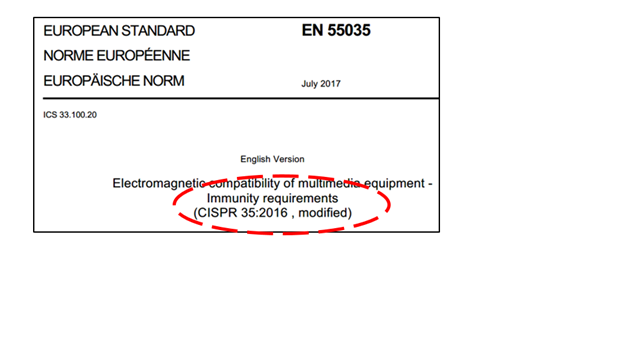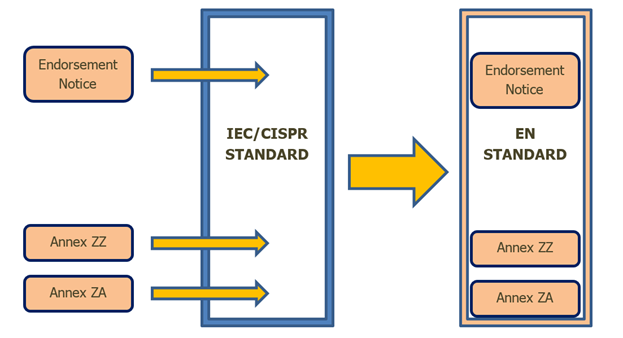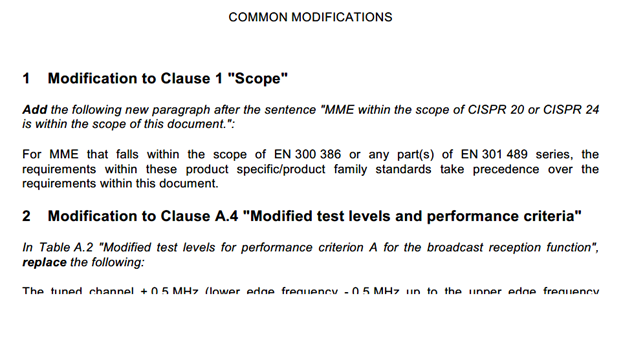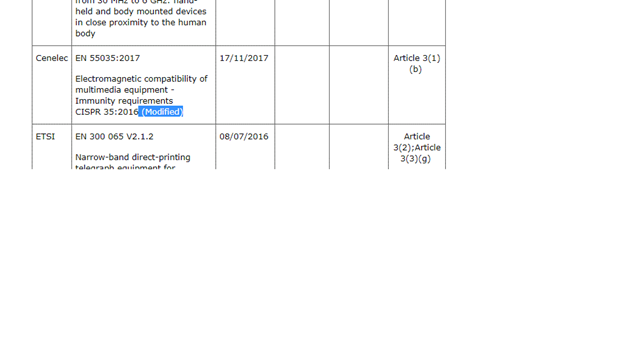See how multimedia standards vary across the world
In the EU, standards play a key role when documenting that electronic products comply with EU requirements. But the EU and the rest of the world do not always agree, which the standard for multimedia equipment is a good example of.
With its internal market, Europe has rather lax regulations when it comes to bringing electronics to market. The EMC directive, RTTE and RED directives, and the LV directive are examples of provisions that ensure access to the entire internal market without the involvement of authorities at the national level. Manufacturers themselves can document that their products meet requirements. Standards play an important role here, but the EU and the rest of the world do not always agree on everything. The EN 55035 standard, regarding multimedia equipment, is one example of this.
The life of a standard
A large proportion of EMC standards are authored by the IEC and CISPR, international standardisation organisations. Working groups comprising experts from around the world meet to develop electrical requirements and measurement methods to be used in documenting the EMC characteristics of products being tested.This broad co-operation ensures to some extent that everybody can contribute the knowledge needed to best establish products' functionality during testing. Testing signals and methods are also established with input from around the world.
Once a standard is ready, it is sent to the IEC system to be voted on. Each member country has one vote with which to either accept or reject the standard. If the standard receives sufficient votes in favour, the standard is published. Thereafter, it stands as the basis for performing specific EMC tests on specific kinds of products. In principle, the standard is applied uniformly throughout the world. This is the basic goal of standardisation.
Two types of voting at once
Many important, international standards are published by the European standards organisation CENELEC concurrently with their publication as international standards. CENELEC holds a parallel European vote at the same time as the IEC holds its international vote. However, there is an important difference. In the EU system, countries vote according to their weights in the system. This means that some larger countries have many more votes than smaller ones, such as Denmark.In some cases, these two voting methods have resulted in a standard being adopted internationally but rejected in the EU, or vice versa. Most of the time, though, standards are approved by both systems. When they are approved, standards also receive a European number. For example, IEC standard IEC 61000-4-3 will be named EN 61000-4-3, and CISPR 35 will be named EN 55035.
The importance of ZZ and ZA
The EU has a special purpose for the standards approved in the EU system. They can be included in common European EMC requirements (or other EU requirements).At the beginning of each standard, information is added about the extent to which the standard was accepted as an EN standard: either as written, or with modifications to the international version; see Figure 1.

CENELEC may modify the IEC's text and technical requirements to provide supplemental information. In standard EN 55035, "Electromagnetic compatibility for multimedia equipment", new text was added under "Scope", meaning that changes were made to how the standard will be applied. This is indicated at the beginning of the document, in an Endorsement Notice.
Annex ZA is added to provide required references to related documents, such as references to other standards describing a testing method preferred by the EU to demonstrate compliance with the EU's EMC requirements. For example, there are at least 4 ways to perform radiated immunity tests, but only 3 are named in Annex ZA, allowing their use.
Annex ZZ includes information used for CE marking. The content of this annex has changed over time. It increasingly provides support for new standards in relation to the EMC and RED directives' Essential Requirements — that is, the basic requirements for EMC and radio spectrum protection. One could say that this text identifies the paragraphs in directives which a given standard is appropriate for documenting. The Endorsement Notice and Annexes are shown in Figure 2.

EN 55035 is unusual
Standard EN 55035 applies to multimedia equipment and is quite new, having been published in 2017. Multimedia equipment includes equipment for audio, video, data processing, gaming, and lighting control. That means it includes PCs and tablets, too. Interest in applying this standard is high; this was made possible by its recent addition to the list of so-called "harmonised standards", which are standards selected as appropriate for CE marking purposes. However, it has been published under the RED radio directive, not the EMC directive, despite including relatively few radio-related requirements. This is also in spite of EN 55035 actually containing two Annex ZZs: ZZA, referring to the EMC directive; and ZZB, referring to RED.It seems illogical that the standard was not also harmonised under the EMC directive. The standard deals primarily with non-radio-related functions. In addition, it includes a section referring to a range of other standards (ETSI — European Telecommunications Standards Institute — EN standards), designed specifically to handle EMC testing of radio equipment. These are standard EN 300 386, and a series of ETSI EN 301 489 standards.
In actual fact, the Endorsement Notice in EN 55035 refers to wholly different standards than those in EN 55035 itself (see Figure 3). This is surprising, since EN 55035 was just harmonised as an RED radio directive standard.

EN 300 386 and EN 301 489-xxx were written by the ETSI, which has the authorisation and means necessary to write harmonised standards for the EU within the field of radio. The ETSI has extensive experience with testing and standards in the field of radio products.
EN 55035 is also the only standard named on the list of harmonised RED standards with the "modified" status (see Figure 4). The corresponding EMC directive list has 26 modified standards, and the Low Voltage Directive has 183 modified standards on its list.

Just use EN 55035 — with or without radio!
EN 55035 being harmonised under RED is good news. The fact that it does not appear on the EMC directive list is not a critical issue. As it happens, the EMC directive allows manufacturers to perform CE marking in accordance with unharmonised EMC standards provided that its risk assessment takes into account the standard's EMC coverage.In light of this, EN 55035 is a very safe choice, as it handles EMC parameters and refers to ETSI EN standards as regards the remaining radio-related parameters. As mentioned, however, it requires the manufacturer to evaluate and justify the choice of standards in its risk assessment.
Radio requirements may appear in CISPR standards
The European Commission's challenges in harmonising appropriate testing standards for RED has delayed the use of RED fairly significantly. Harmonisation is still lacking for many radio standards, and the process of harmonising them is a slow one. For this reason, CISPR may end up changing its focus to include radio functions, making EU harmonisation easier.In that case, it will be challenging for the various international working groups to formulate clear requirements. ETSI has a long history of experience in this field. The IEC and CISPR groups, however, may not; nor have they previously been authorised to engage in radio standardisation. Together with the EU's EMC consultant, Ronald Storrs, the TC 210 CENELEC committee will be handling upcoming standards on the way to harmonisation. The BT (Technical Board) makes the final decision on which standards will be published in harmonised form.
Editor’s note: Since the first publication of this article, the EMC consultant has been replaced by 3 so-called HAS consultants, of which Ronald Storrs is one of them. Another HAS Consultant is Danish Sven Lundbech.

